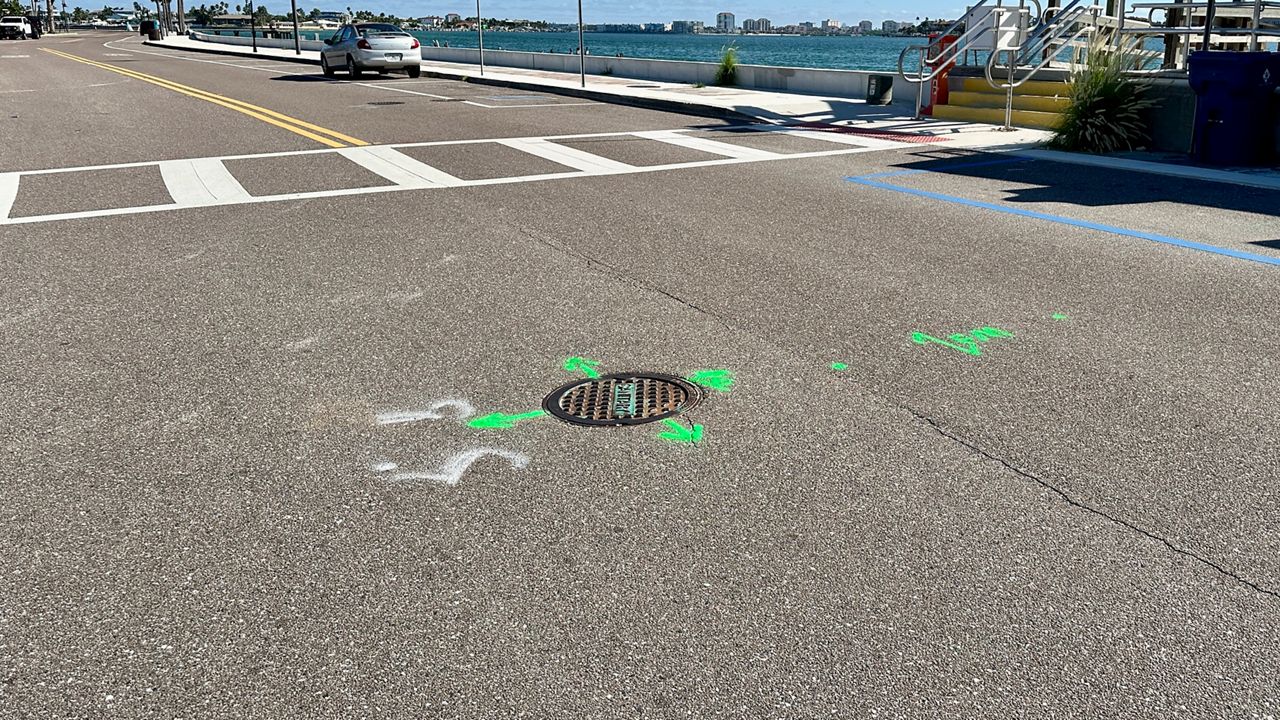ST. PETE BEACH, Fla. — St. Pete Beach wastewater has chloride levels three times higher than the maximum allowed by law, which must be treated and pumped deep underground, instead of being discharged as reclaimed water, according to St. Petersburg Public Works Administrator Claude Tankersley.
What You Need To Know
St. Pete Beach wastewater has chloride levels three times higher than the maximum allowed
The treated wastewater must be pumped deep underground, instead of being discharged as reclaimed water
St. Pete Beach has a contract with St. Petersburg to treat all of its wastewater
The cities have been working together find a solution
“We have noticed that the chlorides in that wastewater have been rising, indicating that they’ve got some saltwater intrusion,” he said. “We’ve been working with them to find where that saltwater intrusion is coming in, so that we can bring it back down to the levels that we need.”
St. Pete Beach has a contract with St. Petersburg to treat all of its wastewater.
The maximum chloride limit is 1,350 milligrams per liter of wastewater. According to test results, the chloride levels in St. Pete Beach passed the benchmark in 2021 and have been rising ever since to three times the level this year.
St. Pete Beach Public Services Director Camden Mills said the highly elevated levels of chloride could be attributed to fewer residents living on the island after last year’s hurricanes, which has caused a lower flow and less dilution of the saltwater. Mills said the saltwater has likely been getting into the system through leaky pipes.
“We suspect the main contribution of the saltwater intrusion is just the condition of the aging system,” he said. “The pipes and the manholes.”
The 38.7 miles of gravity sewer lines in St. Pete Beach were constructed about 70 years ago, with a large majority of the original infrastructure still in place, according to Mills. The city had an inflow and intrusion report done in 2017, which showed 62 percent of the sewer system needed to be replaced or repaired.
“We completed about a third from what was recommended in that previous study,” he said. “We have quite a bit of work left to do.”
Mills presented the chloride problem to the St. Pete Beach City Commission last week, where $2 million was approved to clean and video scope the entire sewer system. An additional $1.9 million has been approved to fix the leaky pipes.
“We’ll be lining pipes, replacing pipes and rehabilitating manholes to help shore up our system to prevent any further saltwater intrusion,” he said. “The issue of inflow and infiltration into our system is a sense of urgency because it’s just going to grow in time as these pipes and manholes continue to age.”
St. Petersburg Public Works identified Lift Stations 4 and 5 in Pass-a-Grille, along with some manholes in the area, as hot spots for saltwater intrusion in January 2024, according to Mills. The public services director said he didn’t know about the extent of the problem until he met with St. Petersburg officials in June.
Some manholes in Pass-a-Grille along with Lift Stations 4 & 5 have been identified as hot spots for saltwater intrusion into the sewer system in St. Pete Beach. Chloride levels have been elevated since 2021. @BN9 pic.twitter.com/5lE3tPWOGo
— Josh Rojas (@JoshRojasBN9) October 2, 2025
“We’re very fortunate to have to have a partner like the City of St. Petersburg, and they’ve reached out to us,” he said. “First alerting us of these elevated chloride levels to help bring this to our attention so we can be aware to rehab our system, but also they’re lending resources to help solve this problem with us.”
All the wastewater from St. Pete Beach is treated at the Northwest Reclamation Water Facility in St. Petersburg. Tankersley said that because of the high levels of chloride all the treated wastewater must be pumped deep underground.
“We put them down deep injection wells down into the saltwater aquifer,” he said. “So we’re basically putting saltwater into saltwater.”
Tankersley said too much chloride in reclaimed water causes salt burn.
“We have to limit how much chlorides are in the reclaimed water, otherwise it’ll burn the lawns,” he said. “So, because that plant is receiving the elevated chlorides, we have not been able to use that plant to provide our customers with reclaimed water. We still have been using the other two plants.”
Tankersley said that the other two plants produce enough reclaimed water for the city’s customers, but if one came off-line, there would be a problem. The Public Works Administrator said he wants to work with St. Pete Beach to find a solution.
“We understand the challenges that they have and we want to be good neighbors,” he said. “They want to be good neighbors, and so we’re working together to find a solution to this.”
Mills said his team regularly meets with St. Petersburg Public Works for continued sampling and to use their expertise to address the issue.
“We don’t want saltwater into our system because that means we’re sending St. Petersburg more flow then than we should be,” he said. “We want to make sure that the water that we are sending them is treatable and that they can reuse for reclaimed water.”

